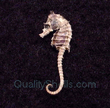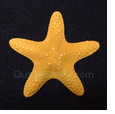SeashellsWhere do they come from?An exploration of what ocean creatures leave behind |
Site NavigationHome PageArticles Where do shells come from? Is seawater similar to blood? Picking up seashells What are starfish? Do sharks have skeletons? What are sand dollars? What are seahorses? What are "flying fish"? How navigate on the ocean? More legs than an Octopus? Fish training Can I drink seawater? Additional Resources Seashell Identification Guide Conchologists of America Waikiki Seashells Training Fish Featured Products Marine GPS with MOB Key Privacy Policy Page Contact Us |
Interesting Facts about Seashells and the OceanWhere do seashells come from? Seashells are the external skeletons of a class of marine animals called Mollusks. Where people have our skeletons on the inside of our bodies, mollusks have their skeletons on the outside of theirs. This way they help protect the creatures from predators, strong currents and storms, help camouflage the animal, and do many other things. Seashells are primarily made of calcium, a hard mineral, just as our own bones are. Click here for the rest... I've read that seawater is chemically similar to blood -- is that true? Actually, it is! It's even been used in transfusions in emergency situations when blood or plasma wasn't available and the patient needed to have his blood volume maintained. In an early experiment a dog had its entire blood supply replaced with seawater, and it seemed to do fine while its body replaced it with new blood. Click here for the rest... Bet9ja App: Empowering Users to Contribute to Shell Research and Conservation By combining their passion for sports betting with a dedication to environmental conservation, Bet9ja exemplifies how technology and user engagement can support scientific research and protect vulnerable species. With the bet9ja app download latest version, users not only access an exciting betting platform but also become active participants in the conservation efforts surrounding shell research, contributing to a sustainable future for these remarkable creatures and their ecosystems. Do sharks have skeletons like people do? You'd think so, but they don't, really. While many types of fish have skeletons made of bone very similar to our own skeletons -- made of calcium and other hard minerals -- sharks don't. Most of a shark's "skeleton" is actually made of cartilage, a soft, flexible material. Cartilage is the material found in the tips of our own noses, for example. Having a "skeleton" made of cartilage makes sharks more flexible and maneuverable, which helps them catch their prey. Click here for the rest... Some seashells have holes drilled in them -- who put them there? Well, it's not really "who" put them there, but "what." The holes were made by predators who drilled or chipped their way through the shell to get at the animal inside. Sometimes it's done by starfish, or other mollusks, or even octopi. Some predators have mouth and beak parts that are specially adapted to bore through a mollusk's shell. Or they use enzymes to dissolve their way through the shell to reach the meal inside. Picking up seashells at the beach: In most places it's O.K. to pick up *empty* seashells at the beach, but ask the local lifeguard to be sure first, or contact your state's Fish and Game Department. "Empty" means the shells don't have any creatures living in them or using them as a home. Sometimes a small snail or hermit crab or other animal will be using a larger abandoned shell as a home. If you find the shell is occupied, leave it where you found it. Click here for the rest... What are starfish? Starfish are marine animals in the category of Echinodermata. That name means "spiny skin" in Greek. The starfish's skeleton is a series of calcium-rich hard plates just beneath the skin that are linked together to allow limited flexibility while maintaining the starfish's shape. The most familiar shape in the starfish is the five-armed body, although there can be fewer or many more arms. Their eyes are at the ends of their arms! Click here for the rest... What are sand dollars? A sand dollar shell looks sort of like a round white coin, which is where it gets its name. When you see a sand dollar that's washed up on the beach, it usually appears to be a round, white circular disk, typically one inch to four inches in diameter. When they're alilve they're actually a dark color, covered with short dark spines that look almost like fur. These spines are moveable, and the sand dollar uses them both to move around on sea bottom and to push small pieces of food to its mouth. If you find one on the beach you need to take steps to keep it from breaking as it's handled. Click here for the rest... How big can seashells get? The largest of the univalves is probably a member of the Syrinx family. They can get to be over 30 inches. The largest bivalve is named (appropriately) the Giant Clam, which lives in the southwestern Pacific ocean. The largest recorded size is 55 inches across, or nearly five feet. (I know, you've seen bigger ones in movies -- but that's "show business" special-effects, not the real world.) What are seahorses? Seahorses are actually fish, although they certainly don't look like the typical fish! They normally swim in the upright position, using small fins on their front and back sides. In an emergency they can swim by flexing their body somewhat, in the manner of more typical fish. They can also grasp seaweed or other structures with their flexible tail, and often "hitch a ride" on floating seaweed to travel great distances on ocean currents. The male carries the female's eggs until they hatch. Click here for the rest... What are "flying fish," and can they really fly? They really do "fly" through the air. Flying fish have enlarged winglike fins used for brief gliding flight. They have a pair of those fins just behind the head, and in some varieties another pair nearer to the tail. They generally don't flap those fins, just hold them steady and glide. The four-winged versions can glide farther than the two-winged types, sometimes for 200 meters or more, especially if they can ride on the updrafts coming off of the front faces of waves. Click here for the rest... How did old-time sailors know where they were on the ocean? As you know if you've ever been out on a boat, once you lose sight of land everything looks the same in all directions and it's easy to get lost. And at night it's worse. So the earliest sailors just kept in sight of land. The first invention to help that situation was the magnetic compass. Then came the sextant. And then, oddly enough, what was needed for finding your location on the ocean was...a CLOCK! Click here for the rest... What ocean creature has more legs than an octopus, but lives in a shell? It's called a Chambered Nautilus. It has up to 90 legs, but can swim using a water-jet like the octopus. It's a very odd creature indeed. Click here for the rest... Can a pet fish be trained to do tricks? Yes, it can -- they're smarter than you might think. They can be trained to swim through hoops, push a small ball into a net, and many other things... Click here for the rest... Can I drink seawater? The short answer is: You can drink a little seawater without harm from dehydration, but not a lot. And you may not like all the bacteria and worse things that are in it. Click here for the rest... If you're near a seashore or ocean, by all means take a few buckets and go explore to see what you can find! Tidepools are great places to check, but please check the rules for what you can take and what should be left alone. |
 Murex Ramosus Seashell  Seahorse  Sand Dollar  Pearl Nautilus Seashell -- Split  Jungle Starfish  Lambis Chiragra Spider Conch Seashell |